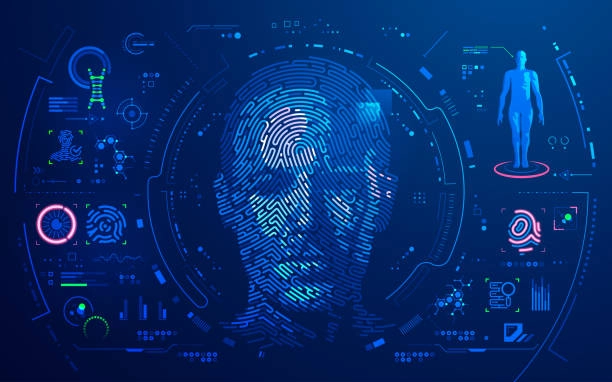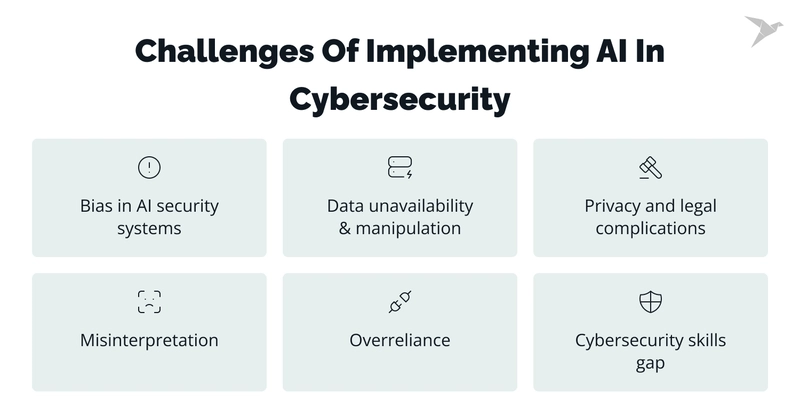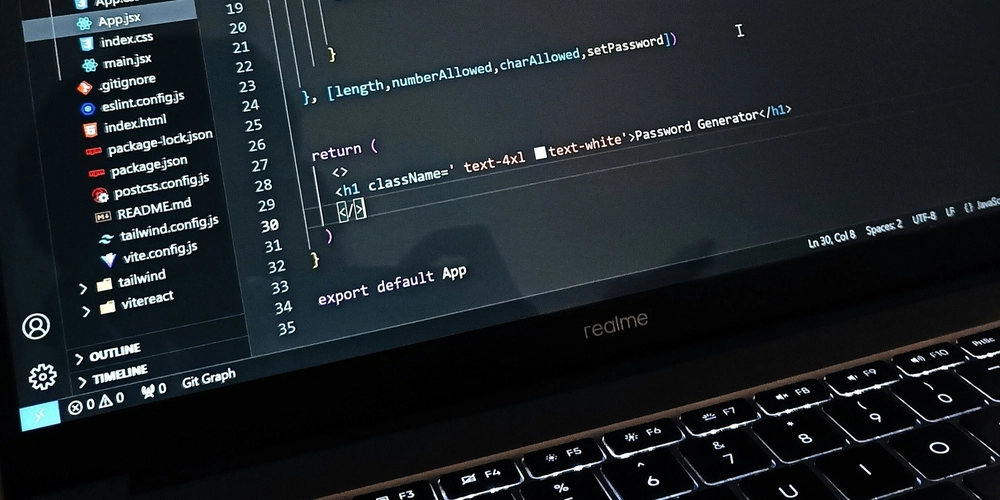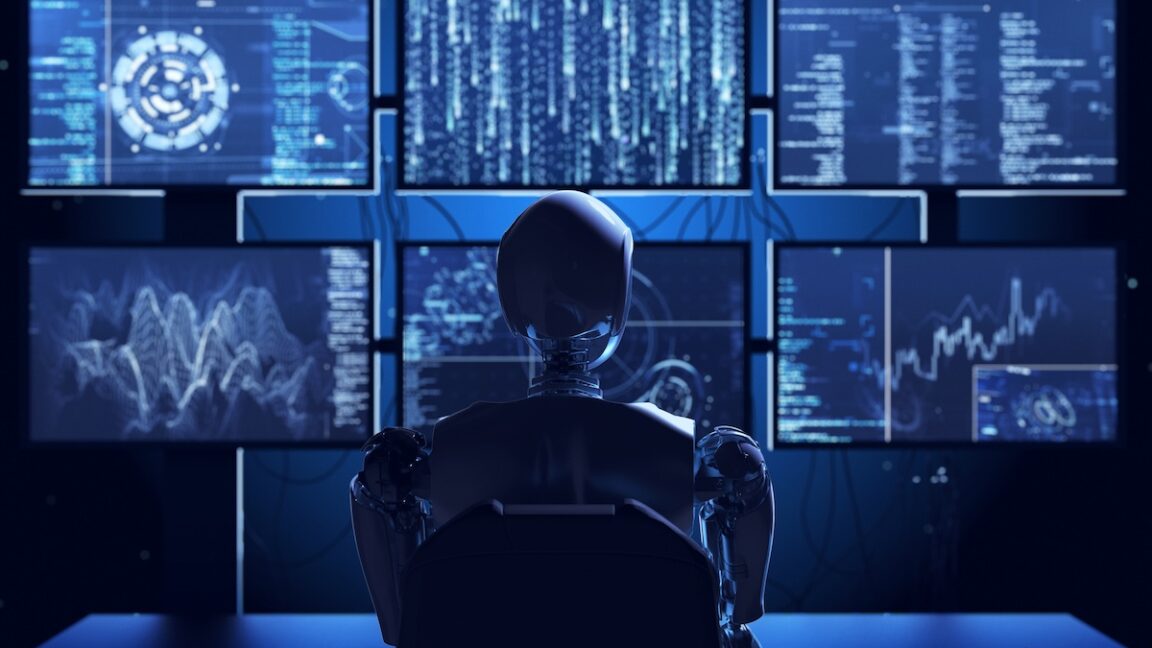The Intelligent Shield: How AI and Machine Learning are Revolutionizing Cyber Threat Detection
The cyber threat landscape is growing more complex and persistent in today's hyperconnected world. Even though they are still crucial, traditional security measures frequently can't keep up with the complexity and speed of contemporary attacks. This is where a new paradigm for proactive threat detection and mitigation is being offered by the transformative power of artificial intelligence (AI) and machine learning (ML). Consider a digital sentinel that is always learning, changing, and spotting malicious activity before it has a chance to spread. This is the potential of AI and ML in cybersecurity, as well as its increasingly realized potential. The sheer volume of network traffic logs, user behavior patterns, and system activity makes it challenging to spot minute irregularities that might point to an impending cyberattack. Unlocking Predictive Analysis's Potential The ability of AI and ML to go beyond reactive responses to proactive threat prediction is one of the most important benefits of these technologies in cybersecurity. ML algorithms can learn to. As a result, security teams are able to strengthen defenses and possibly eliminate threats before they have a chance to do serious harm. Bridge Group Solutions, a leader in cutting-edge cybersecurity services, leverages these advanced technologies to create proactive and scalable cyber defense frameworks tailored to modern enterprise needs. The "Normal" in Behavioral Biometrics: An Interpretation Algorithms for machine learning can create a baseline of "normal" behavior for networks, devices, and users. This entails examining keystroke dynamics, network traffic flow, application usage, and login patterns. An alert may be triggered by any notable departure from this accepted standard, which could be a sign of malicious software activity, an insider threat, or a compromised account. This approach to behavioral biometrics adds an essential layer of security by concentrating on the "who" and "how" of system interactions instead of just the "what." Automating Remediation and Threat Response Beyond detection, threat response and remediation automation is another area where AI and ML are becoming more and more significant. AI-powered systems can start predetermined actions, like quarantining suspicious files, blocking malicious IP addresses, or isolating compromised devices, as soon as a threat is detected. By drastically cutting down on response time, this automation in cybersecurity minimizes possible harm and frees up security analysts to concentrate on more intricate threats. Consider a network that is capable of self-healing and can neutralize and contain threats with little assistance from humans. Organizations like Einfratech are implementing AI-powered automation tools to ensure real-time threat mitigation, helping enterprises stay ahead in this ever-evolving cybersecurity domain. Enhancing Information and Event Management for Security (SIEM) SIEM systems compile events and security logs from multiple sources. But security teams may become overwhelmed by the sheer number of alerts generated, which could result in "alert fatigue" and missed threats. Security teams can concentrate on the most urgent problems by integrating AI and ML with SIEM systems to reduce noise, rank important alerts, and offer more insightful threat analysis. The Continuous Development and Difficulties Even though AI and ML have enormous potential in cybersecurity, it's critical to recognize their continuous development and difficulties. increasingly complex attacks, resulting in a continuous arms race. Conclusion These technologies are laying the groundwork for a more secure digital future by proactively detecting threats, automating responses, and improving our analytical skills. The role of AI and ML in protecting our increasingly linked world will also develop further, providing an essential layer of intelligent defense against the constantly changing threat landscape. The strength of the intelligent shield, which is currently being forged, will be essential for overcoming tomorrow's cyber threats.

The cyber threat landscape is growing more complex and persistent in today's hyperconnected world. Even though they are still crucial, traditional security measures frequently can't keep up with the complexity and speed of contemporary attacks. This is where a new paradigm for proactive threat detection and mitigation is being offered by the transformative power of artificial intelligence (AI) and machine learning (ML). Consider a digital sentinel that is always learning, changing, and spotting malicious activity before it has a chance to spread. This is the potential of AI and ML in cybersecurity, as well as its increasingly realized potential.
The sheer volume of network traffic logs, user behavior patterns, and system activity makes it challenging to spot minute irregularities that might point to an impending cyberattack.
Unlocking Predictive Analysis's Potential
The ability of AI and ML to go beyond reactive responses to proactive threat prediction is one of the most important benefits of these technologies in cybersecurity. ML algorithms can learn to. As a result, security teams are able to strengthen defenses and possibly eliminate threats before they have a chance to do serious harm.
Bridge Group Solutions, a leader in cutting-edge cybersecurity services, leverages these advanced technologies to create proactive and scalable cyber defense frameworks tailored to modern enterprise needs.
The "Normal" in Behavioral Biometrics: An Interpretation
Algorithms for machine learning can create a baseline of "normal" behavior for networks, devices, and users. This entails examining keystroke dynamics, network traffic flow, application usage, and login patterns. An alert may be triggered by any notable departure from this accepted standard, which could be a sign of malicious software activity, an insider threat, or a compromised account. This approach to behavioral biometrics adds an essential layer of security by concentrating on the "who" and "how" of system interactions instead of just the "what."
Automating Remediation and Threat Response
Beyond detection, threat response and remediation automation is another area where AI and ML are becoming more and more significant. AI-powered systems can start predetermined actions, like quarantining suspicious files, blocking malicious IP addresses, or isolating compromised devices, as soon as a threat is detected. By drastically cutting down on response time, this automation in cybersecurity minimizes possible harm and frees up security analysts to concentrate on more intricate threats. Consider a network that is capable of self-healing and can neutralize and contain threats with little assistance from humans.
Organizations like Einfratech are implementing AI-powered automation tools to ensure real-time threat mitigation, helping enterprises stay ahead in this ever-evolving cybersecurity domain.
Enhancing Information and Event Management for Security (SIEM)
SIEM systems compile events and security logs from multiple sources. But security teams may become overwhelmed by the sheer number of alerts generated, which could result in "alert fatigue" and missed threats. Security teams can concentrate on the most urgent problems by integrating AI and ML with SIEM systems to reduce noise, rank important alerts, and offer more insightful threat analysis.
The Continuous Development and Difficulties
Even though AI and ML have enormous potential in cybersecurity, it's critical to recognize their continuous development and difficulties. increasingly complex attacks, resulting in a continuous arms race.

Conclusion
These technologies are laying the groundwork for a more secure digital future by proactively detecting threats, automating responses, and improving our analytical skills. The role of AI and ML in protecting our increasingly linked world will also develop further, providing an essential layer of intelligent defense against the constantly changing threat landscape. The strength of the intelligent shield, which is currently being forged, will be essential for overcoming tomorrow's cyber threats.

































































































































































![[The AI Show Episode 145]: OpenAI Releases o3 and o4-mini, AI Is Causing “Quiet Layoffs,” Executive Order on Youth AI Education & GPT-4o’s Controversial Update](https://www.marketingaiinstitute.com/hubfs/ep%20145%20cover.png)


![[The AI Show Episode 143]: ChatGPT Revenue Surge, New AGI Timelines, Amazon’s AI Agent, Claude for Education, Model Context Protocol & LLMs Pass the Turing Test](https://www.marketingaiinstitute.com/hubfs/ep%20143%20cover.png)
















































































































































































































































.png?width=1920&height=1920&fit=bounds&quality=70&format=jpg&auto=webp#)
.png?width=1920&height=1920&fit=bounds&quality=70&format=jpg&auto=webp#)











































































































































![AirPods Pro 2 With USB-C Back On Sale for Just $169! [Deal]](https://www.iclarified.com/images/news/96315/96315/96315-640.jpg)
![Apple Releases iOS 18.5 Beta 4 and iPadOS 18.5 Beta 4 [Download]](https://www.iclarified.com/images/news/97145/97145/97145-640.jpg)
![Apple Seeds watchOS 11.5 Beta 4 to Developers [Download]](https://www.iclarified.com/images/news/97147/97147/97147-640.jpg)
































































































